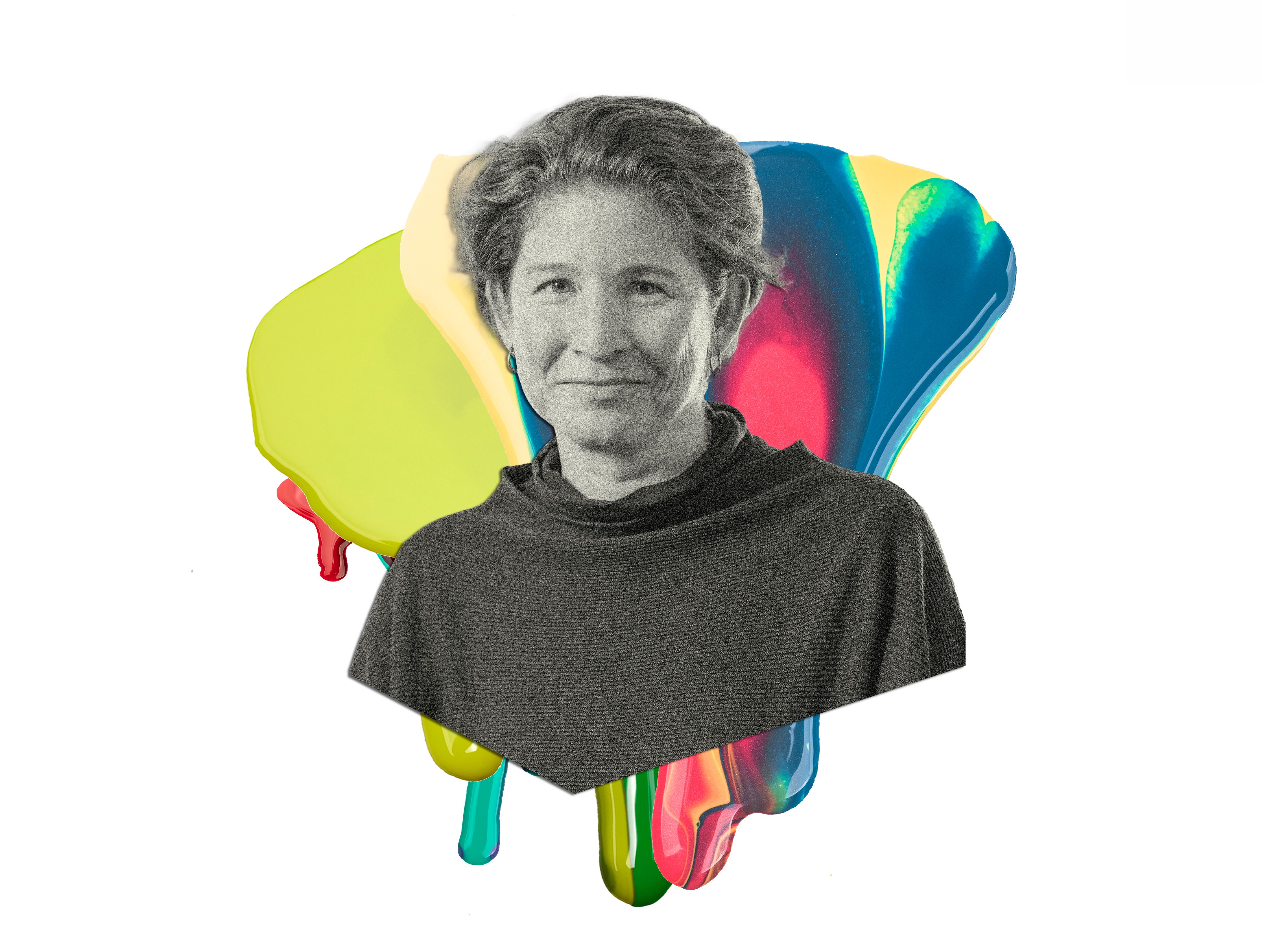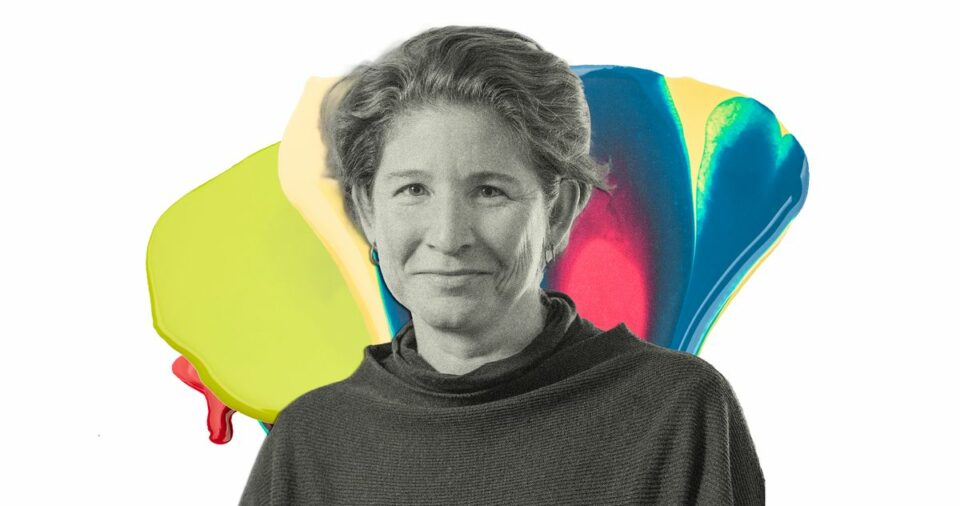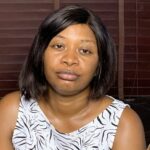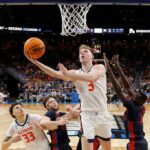
Susan Butts fell in love with fossils as an undergrad. She’d gone to school to study political science and only signed up for Geology 101 to fulfill a course requirement. “A lot of my colleagues have known since they were 5 that they wanted to study butterflies,” she says. For her, though, it was“practically a series of accidents that brought me to this point.” Still, the subject matter — rock and mineral formation, physical imprints of the Earth’s past — gripped her. “After the second class, I decided, ‘Wow, I’m going to change my major.’” While studying water chemistry, she came across some fossil shells. “I was like, gosh, these are so old. These are so interesting and beautiful,” Butts recalls. “Everyone understands the appeal of gathering seashells, and I was doing that, but these seashells were 350 million years old.”
Butts went on to do a Ph.D. in paleontology, though she chose not to focus on dinosaurs, the giant reptiles most often associated with the field. The ancient life she found most interesting were invertebrates, tiny animals without bones. In particular,she was drawn to brachiopods, creatures with two shells that resemble clams. “They basically do nothing on the ocean floor all day,” she says. “But they’re really useful for understanding past oceans.” And that’s kind of the point, she explains: Learning about ancient marine environments and the history of global climate change can help us understand the ways in which the world is changing today.
Now, Butts is the director of collections and research at the Yale Peabody Museum, which houses the first brontosaurus, stegosaurus, and triceratops specimens ever discovered. The museum reopens on March 26 after a four-year renovation, and Butts spends her workdays among the fossils managing the museum’s invertebrate paleontology collection, which boasts 4.5 million specimens — including bacteria fossils that are billions of years old. Butts lives outside of New Haven with her husband, teen son, and two adopted cats, Rocky and Maddy. Here’s how she gets it done.
On her morning routine:
I get up at 6:20 or so. I go and wait with my son for the bus, which comes at 7 a.m. We hang outside and talk. Right after that I’ll leave for work. I can’t check my phone in the morning or I’ll be late. The only thing I’ll do is look at my schedule for the day and figure out what I’m going to wear. Then I commute to work.
On the way, I listen to the radio — I’m a big BBC and NPR fan — or, right now, I’m listening to a lot of audio books. I read Ninth House by Leigh Bardugo and now I have the second book on tape. I’m not into fantasy, but it’s set in New Haven and Yale. I recognized all the places in it, and it talks about Yale culture, so that made it especially fascinating.
On a typical day:
Sometimes I spend the day in meetings. I might be talking about frozen tissues, or I may be talking about people doing field work. Right now, we’re on the brink of reopening the museum after this multiyear closure and we’ve renovated all of the galleries. We’re finalizing exhibit texts, working on last-minute installations, walking through with curators, running preview tours. We’re also moving a million fossils from one room to another. People hear “fossils” and think dusty drawers, but it’s not that at all. We have these giant compact storage shelves — really big cabinets that go on these racks that move around with a big handle. We have a drying room and a giant walk-in freezer. We freeze stuff that comes into the museum to make sure it doesn’t have any pests.
And when you’re working with millions of items, the main thing is to make sure all the data stays with the sample. We make sure things are packed really carefully. It can be really time consuming and really labor intensive, but we have barcoding and barcode readers to control the inventory and track all that movement.
On making science accessible:
We want to make sure the science we’re doing feels approachable, that it’s cool and fun. For example, one student is working on how to determine the color of dinosaur eggs. When you look at the fossils, they have no color; they’re gray. What she was able to do was use a chemical analysis to determine what the color of the eggshells used to be. We learned there were a variety of colors — really bright blue eggs and sort of bluish-green ones and brown eggs and speckled eggs. That color tells you a lot about the ecological habits that an animal had and we can tell a story around that. For example, an alligator has this white egg. If you leave a white egg out on the ground, it will get eaten. It’s very obvious. It’s not camouflaged at all. So we know that they buried the eggs. If the eggs are colored, you learn something else — what was it made to blend in with? Did the dinosaur sit on its nest and protect it? We have to figure out a way to make this kind of chemical analysis interesting.
On working in a male-dominated field:
Most science is male-dominated, but I think it’s almost getting half-and-half these days. I don’t have any data to support that. But from being an undergrad until now, I’ve worked with a lot more women. We’re still working on increasing diversity in the sciences, and that’s something we hope to do through our exhibits and through the education we do at the Peabody Museum; letting people know this is a space for them, a space where they can see themselves working in the future.
Geologists in general are a pretty good bunch of people. I have faced some bias, but I’ve been fortunate that it’s been fairly mild. The main thing would be not having as strong of a voice at the table, and maybe not being the first person people would go to. Those are subtle more than overt biases, but they all contribute to the problem of low representation in science.
On her managerial style:
I tend to work with people I like. You have the opportunity to work with whoever you want who’s a specialist in your field or in another field. I just look for collaborations with people I know will work as hard as I do, and who will be good-natured and reliable for a deadline, when there’s some sort of deliverable required. There are so many people to choose from in science, but it’s not too hard.
On how having kids changed her approach to work:
Thirteen years ago, when I had my son, you had to hold off on having kids if you were in academia. That’s less the case now, but it was tough. You’re doing field work, you’re going to conferences, you have to go away to collaborate with people. You might work long, irregular hours. They’re just starting to make better systems for helping parents get through those times. Back then, I would take really short trips. For example, I went to a conference in China and in order to minimize the time away from my son, I was gone for six days — three days at the conference and three days in the air. My husband’s awesome and he spent a lot of time single-parenting for us.
But having a kid also helped the way I work. Once I had a child, I really honed my ability to shut off the world and get a lot of work done. I used to be a lot more stressed out about work than I am now. I just take it in stride a little better.
On winding down:
Sometimes after work, I go straight to the gym and that is the ultimate wind down. I upgraded my gym for my birthday and I’ll do all sorts of stuff — treadmill, exercises for ski fitness (I’m a big skier on the weekends), weights, stretches. And I’ll use the sauna. I go for a couple of hours while my son practices with his rock-climbing team. Otherwise, when I get home, I take a few minutes to talk to my husband in the kitchen. I check in with my son about how his day went. Then I move on to the things that need to be done. My husband and I split up duties very nicely, and when I come home from the gym, he’s making dinner, but there’s still laundry. The cats always need food. I just remember not to take life too seriously, that’s probably my best piece of advice.
By Sangeeta Singh-Kurtz , 2024-03-27 12:00:21
Source link


